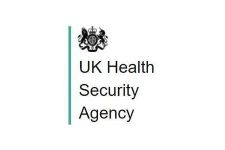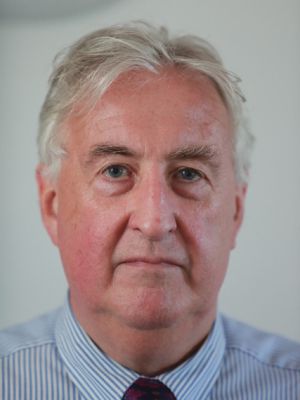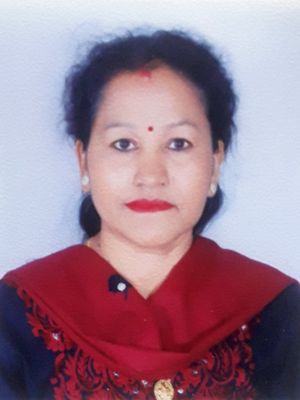
About Faculty of Disaster Medicine – India and Nepal
The Faculty of Disaster Medicine – India and Nepal (FDMIN) is the flagship UK programme established in 2015 in partnership with National Association of Primary Care (NAPC), development support from UK Health Security Agency (formerly Public Health England) and the Pre-Hospital Emergency Care of the Royal College of Surgeons, Edinburgh. This innovative vision has emerged from over 20 years of investment in humanitarian programmes in India and the sub-continent with focus on health care of badly affected and displaced population from wide range of disasters.
The concept of ‘disaster medicine’ as a specialty is relatively new and is very often confused with disaster management, emergency medicine and pre-hospital care via ambulance services. Significant investment of ‘Saving Lives’ programmes in various disasters and reviews of disaster preparedness and resilience building has shown that the knowledge and expertise of ‘disaster medicine’ is virtually absent in majority of low- and middle-income countries.
Additional analysis of management of disasters and health care and training in ‘disaster medicine’ confirmed that that there were only a small number of training programmes available around the world. Majority of these programmes were a mixture of disaster management and the concepts for disaster medicine preparedness. These programmes were more suitable for the ‘developed countries’ with advanced healthcare systems and financial resources.
FDMIN is a pioneering programme developed to build badly needed clinical capacity in disaster medicine for low – and middle – income countries. The programme is funded by ‘Saving Lives’ charitable donations. Primary focus of the programme is on ‘training the trainers’ in established medical and healthcare education institutions who will then expand the disaster medicine capacity at various levels appropriate for their country. India and Nepal have been chosen for the pilot for this programme as these countries have:
- Wide range of man-made and natural disaster and complex disasters resulting from conflicts.
- Have a health care and medical education system which would enable development of a programme ‘fit for purpose’ for developing countries.
Programme
Disaster Medicine programme for India & Nepal is a niche programme for ‘training the trainers’ consisting of 16 modules. The programme is designed to enable various healthcare teaching institutions and universities of low- & middle-income countries to:
- Develop core clinical capacity for disaster medicine at various levels of the healthcare system.
- Develop essential skills across the healthcare spectrum based on available resources.
- Enable research and publish case studies for learning and improving medical and healthcare impacts from a range of diverse regular disasters affecting their population.
- Improve disaster management plans by including essential disaster medicine planning, preparedness, response and recovery, by building effective trained disaster medicine teams and ensure healthcare system preparedness which has mitigation, risk reduction and resilience plans at local, regional and national level.
- Strengthen country’s healthcare system with focus on population health and primary care, public health, pre-hospital & emergency care and global health security.
Core objective
The core objective of the Faculty is to build clinical capacity for ‘Disaster Medicine.’
The Faculty leaders shall enable clinical/healthcare capacity building for regional disasters by offering a range of dedicated training through:
- Regional universities and training institutions accredited by appropriate government regulatory bodies.
- The 16 modules may be delivered as three tier programme – foundation level certificate, post-graduate certificate or a diploma or Master’s programme.
Delivery
The development of clinical capacity building shall be a ‘multi-stream’ programme approach with credit accumulation from training providers. FDMIN has MoU with the partner institutes in India and Nepal to develop teaching and training in Disaster Medicine and the programme shall offer “fit for purpose” training programmes at different levels from these institutions appropriate for the region.
United Kingdom Development Advisors
Indian University Partners
Indian Pharmacy College Partners
Partner in Nepal
International Advisory Group – UK
UK Development Board
International Advisory Group – India & Nepal
Sri Ramachandra Medical College and Research Institute – Advisory Board Members
Amrita Institute of Medical Sciences, Kochi, Kerala – Advisory Board Members
Pune Pharmacy Development Board
Maharashtra Disaster Medicine Faculty
NADEM Advisory Board Members
Timeline of Disaster Medicine Faculty Development – Partnerships, Team building and Training
The first Indian Faculty for Disaster Medicine from Pune, India in 2015. The project was led by a ‘Saving Lives’ – Birmingham and supported by the National Institute for Pre-hospital Care & Trauma Management – Ruby Hall Clinic and The Sancheti Institute for Orthopaedics and Rehabilitation at Pune. The launch was successfully completed by providing foundation level training programme in ‘Disaster Medicine’ to around 75 doctors between Saturday 21st March and Sunday 22nd March 2015.
Between 2015 to 2019, nine pilot ‘training of trainers’ courses were undertaken in Pune, Chennai, Delhi, Kochi, Madurai; 10 course modules were tested, 8 consultations meetings for disaster medicine and 3 consultation meetings were held for Pre-hospital Trauma Care course for developing countries involving senior doctors which included emergency medicine physicians, GPs/community doctors and public health professionals from major medical colleges, hospitals and doctors associations. Based on the above work, FDMIN has developed a curriculum of 16 modules with focus on role of 1. Pre-hospital Care and Emergency Medicine 2. GPs and community physicians and 3. Public Health in disaster medicine.
Timeline of Covid19 Pandemic Support
The FDMIN lead Dr Peter Patel has been keeping an eye on potential outbreaks of infectious diseases as part of the faculty’s training programme on Epidemics and Pandemics. Except for reports of sporadic outbreaks of MERS and SARS in middle east and far east, Ebola outbreak in Africa and Zika virus spread around the world, in India most of the focus was and some anxiety on detecting spread of swine flu (influenza A virus – H1N1) and potential bird flu (H5N1, H7N9, H5N6 and H5N8). Swine flu epidemics became normal seasonal infections around the world and India had major challenges tackling epidemics caused by Swine flu. In 2019, the number of swine flu infections in India doubled from previous year.
FDMIN between 2015 and 2019 in their pilots was training Indian doctors on recent epidemics (Ebola, Zika and Influenza pandemic (2009-H1N1) as part of core disaster medicine learning.
On 31 December 2019, China reported a cluster of cases of pneumonia of unknow origin in Wuhan. Majority of the countries around the world paid very little attention to these reports. WHO set up Incident Management Support Team (IMST) 01 January 2020 at headquarters, regional headquarters and country level. This was followed on 5 January 2020 by publication of WHO’s first Disease Outbreak News on the new virus. Based on their previous experience from MERS and SARS, WHO issued further guidance within 5 days for healthcare workers protection and prevention of spread of the virus in healthcare systems. By 22 January 2020 WHO issued a statement on 22 January 2020 that there was human to human transmission by this virus from Wuhan.
The cause of these pneumonia cases was linked to a novel coronavirus which many called Chinese Corona virus, later termed as 2019-nCov and finally SARS-Cov-2. WHO Situation Report 10 published on 30 January confirmed cases of 2019-nCoV in Finland, India and Philippines linking these cases to people with travel history to Wuhan. In the same report WHO recommended that the interim name of the disease causing this outbreak should be called “2019-nCoV acute respiratory disease.” The new virus had by now spread to 19 countries with 7818 cases recorded by WHO.
































































